#methane
Text
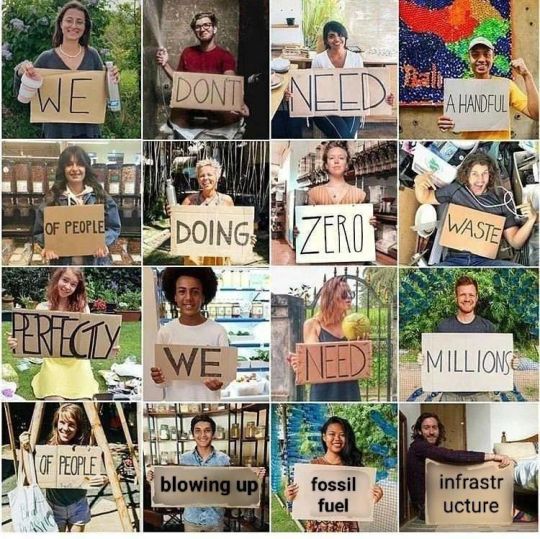
#fossil fuels#infrastructure#global warming#environmentalism#memes#meme#antifascist#co2 emissions#co2#methane#carbon dioxide#jerkmillionaires#jerkbillionaires#jerktrillionaires#eat the rich#eat the fucking rich#ausgov#politas#auspol#tasgov#taspol#australia#neoliberal capitalism#fuck neoliberals#anthony albanese#albanese government#fuck the gop#fuck the police#fuck the supreme court#fuck the patriarchy
7K notes
·
View notes
Text
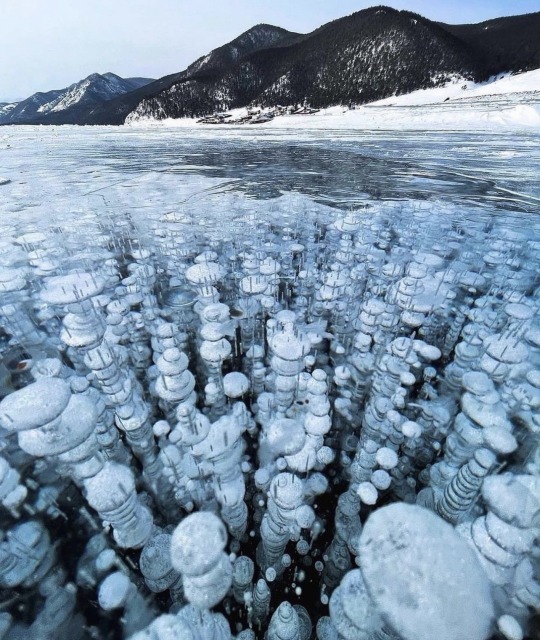

Underwater Ice Bubbles
This phenomenon takes place as decomposing plants on the bottom of lakes emit methane gas and form bubbles while the lake begins to freeze.
3K notes
·
View notes
Text
"A global shift to a mostly plant-based “flexitarian” diet could reduce greenhouse gas emissions and help restrict global heating to 1.5C, a new study shows.
Previous research has warned how emissions from food alone at current rates will propel the world past this key international target.
But the new research, published in the Science Advances journal, shows how that could be prevented by widespread adoption of a flexitarian diet based around reducing meat consumption and adding more plant-based food.
“A shift toward healthy diets would not only benefit the people, the land and food systems,” said Florian Humpenöder, a study author and senior scientist at the Potsdam Institute for Climate Impact Research, “but also would have an impact on the total economy in terms of how fast emissions need to be reduced.” ...
The researchers found that adopting a flexitarian diet could lower methane and nitrous oxide emissions from agriculture and lower the impacts of food production on water, nitrogen and biodiversity. This in turn could reduce the economic costs related to human health and ecosystem degradation and cut GHG emissions pricing, or what it costs to mitigate carbon, by 43% in 2050.
The dietary shift models also show limiting peak warming to about 1.5C can be achieved by 2045 with less carbon dioxide removal, compared with if we maintain our current diets.
“It’s important to stress that flexitarian is not vegetarian and not vegan,” Humpenöder says. “It’s less livestock products, especially in high-income regions, and the diet is based on what would be the best diet for human health.”
In the US, agriculture accounts for more than 10% of total GHG emissions. Most of it comes from livestock. Reducing meat consumption can free up agricultural land used for livestock production, which in turn can lower methane emissions. A potent greenhouse gas, methane is mainly expelled from cows and other animals raised for livestock. Animal production is the primary contributor to air quality-related health impacts from US food systems.
“This paper further confirms what other studies have shown, which is that if we change our diets to a more flexitarian type, we can greatly reduce greenhouse gas emissions,” said Jason Hill, a professor in the University of Minnesota’s department of bioproducts and biosystems engineering.
According to the study authors, one way to achieve a shift toward healthier diets is through price-based incentives, such as putting taxes on the highest-emitting animal products, including beef and lamb. Another option is informing consumers about environmental consequences of high meat consumption."
-via The Guardian, March 27, 2024
#flexitarian#vegetarian#vegan#environment#environmental news#agriculture#big agriculture#beef#methane#air pollution#greenhouse gasses#carbon emissions#1.5 degrees#climate action#climate hope#good news#hope#food#food systems
141 notes
·
View notes
Text
When Canadian dairy farmer Ben Loewith's calves are born next spring, they will be among the first in the world to be bred with a specific environmental goal: burping less methane.
In June, Loewith, a third-generation farmer in Lynden, Ont., started artificially inseminating 107 cows and heifers with the first-to-market bull semen with a low-methane genetic trait.
"Selectively breeding for lower emissions, as long as we're not sacrificing other traits, seems like an easy win," Loewith said.
The arrival of commercially available genetics to produce dairy cattle that emit less methane could help reduce one of the biggest sources of the potent greenhouse gas, scientists and cattle industry experts say.
Continue Reading
250 notes
·
View notes
Text
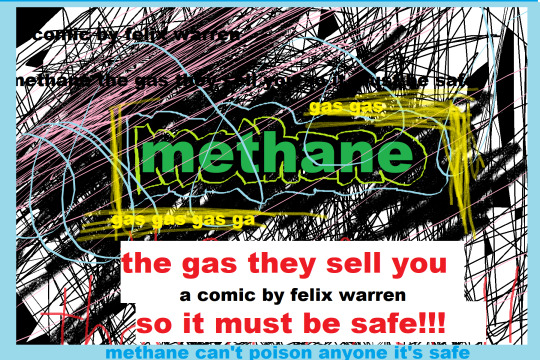


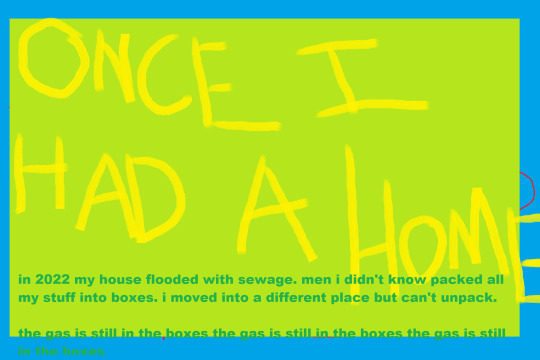





This is a short comic I did about my experience while I was unknowingly exposed to dangerous levels of methane for over a year after years of exposure to low levels of it. I purposefully used Paint and a laptop touchpad to convey how difficult it was to do anything while under methane's influence, and how warped the world felt.
I'll post more about this as I recover.
182 notes
·
View notes
Text
60 notes
·
View notes
Text
https://www.yesmagazine.org/environment/2022/07/15/navajo-nation-citizen-science-pollution
Methane pollution is poorly tracked, so Diné activists are monitoring it themselves.
—
From behind her FLIR GF320 infrared camera, Kendra Pinto sees plumes of purple smoke otherwise invisible to the naked eye. They’re full of methane and volatile organic compounds, and they’re wafting out of an oil tank in New Mexico’s San Juan Basin.
Pinto, a member of the Diné (Navajo) community and field advocate with environmental group Earthworks, relies on this device in her fight to keep her community’s air clean. She lives in the Eastern Agency of the Navajo Nation, home to booming oil and gas production.
“When I walk outside, I can’t just think about fresh air. I’m thinking about the VOCs. I’m thinking about the methane that I’m breathing in, because I know what’s out there,” Pinto said. “I see it all the time.”
She’s one of countless citizen scientists across the country who are tracking and reporting environmental harms committed by the oil and gas industry to regulators. And here, there are many: The Environmental Defense Fund estimates that each year, New Mexico’s oil and gas companies emit more than 1.1 million metric tons of methane, a greenhouse gas around 86 times more potent in its warming potential than carbon dioxide over a 20-year period. Much of this comes from wasted natural gas—$271 million of it in this state alone, according to the EDF. It leaks out of faulty equipment and is intentionally expelled through the processes of venting and flaring, in which excess, unrefined natural gas is released or burned from oil wells and refineries to eliminate waste or reduce pressure buildups.
This is bad for the planet—high volumes of methane released into the atmosphere accelerate the pace of the climate crisis. It’s also bad for the people who live around it who are exposed to the pollutants that typically come along with methane emissions, like benzene, a carcinogen, and PM2.5 and PM10—particulate matter small enough to get lodged deep in the lungs. Pinto said her neighbors experience disproportionately high rates of headaches, nosebleeds, allergies, and respiratory issues, like sinus and throat discomfort.
“I think the scariest thing about methane is it’s odorless,” Pinto said. “It’s a silent killer. And if my neighbors are breathing it in, that’s worrisome.”
These emissions and the fossil fuel development that causes them have long been “insufficiently regulated,” said Jon Goldstein, senior director of regulatory and legislative affairs at EDF. In 2020, then-president Donald Trump rolled back Obama-era regulations on methane that effectively eliminated the requirement that oil and gas companies monitor and repair methane leaks in their infrastructure.
The Senate voted to reinstate them in April 2021, and last November, the Biden administration announced it would introduce even more comprehensive regulations in an interagency effort to crack down on emissions from the oil and gas sector. As part of the plan, the Environmental Protection Agency proposed its own rules, which include a requirement that states reduce methane emissions from thousands of sources nationwide, and a provision that encourages the use of new technology designed to find major leaks. A final methane rule is expected to be implemented later this year.
The Navajo Nation, too, is taking things into its own hands: The Navajo Nation Environmental Protection Agency is currently considering adopting a permitting program to regulate methane from oil and gas development on its land.
Here, methane emissions from oil and gas companies are 65% higher than the national average, seeping out of pipelines, oil rigs, and the like. The San Juan Basin, some 150 miles northwest of Santa Fe, has received a failing grade from the American Lung Association for ozone pollution, or smog, the result of the combination between VOCs and radiation from sunlight.
Exposure to ozone has been tied to degraded respiratory health and asthma attacks, and it’s typically seen in cities, Goldstein said.
“The San Juan Basin isn’t home to large cities,” he said. In San Juan County, ozone is the result of the widespread build-out of oil and gas wells; approximately half of the county’s 50,000 residents who identify as Indigenous live within half a mile of those wells, according to EDF.
Catching emissions at the source will be crucial to changing this legacy. And where regulators can’t (or won’t) step in, residents like Pinto are. The federal government is now relying upon community monitoring, or work that citizens do to contribute to public understanding of the scope of air pollution near fossil fuel sites, a development that Eric Kills A Hundred, tribal energy program manager at EDF, believes will be “huge.”
The EPA’s methane proposal includes a plan to implement a program to “empower the public to detect and report large emission events for appropriate follow-up by owners and operators,” according to an agency news release.
During the comment period for the EPA’s proposed community monitoring program, members of the petroleum industry questioned whether the agency has the authority to establish it at all, primarily objecting to the idea that air quality monitoring be conducted by entities other than agencies and producers themselves, E&E News reported in May.
But Pinto said groups like Earthworks have a track record of doing this work long before federal regulators began tapping them for their data collection.
“Documenting these types of emissions is important because no one else is really doing it,” she said. “Even the agencies that are regulating this type of thing. Because we’re in a rural area, what can they actually capture when they come out here? Are they going to more than 100 sites?”
Kills A Hundred said these efforts are not only about what the Navajo Nation can contribute to government data on methane pollution, they’re also about empowering the community to play a role in stopping it.
“Having been the stewards of the land for so long,” he said, “it’s just so important for these communities to be active and raise their voice.”
#indigenous#native american#climate crisis#methane#fossil fuels#greenhouse gas emissions#navajo#dine#diné#navajo nation#epa#environmental action#pollution#science
641 notes
·
View notes
Text
Prime Minister Justin Trudeau said Wednesday that Canada's methane reduction efforts are ahead of schedule and it's in a position to exceed its targets for reducing one of the most potent planet-warming gases.
Speaking at an event on the sidelines of the United Nations General Assembly in New York, Trudeau confirmed Canada is on track to meet and even exceed its methane emissions targets.
"Canada has committed to reduce by 2030 methane emissions from the oil and gas sector by at least 75 per cent below 2012 levels," Trudeau told world leaders. "Today, I can announce that the draft regulations we will share soon will be designed to help us exceed this ambitious target."
Full article
Tagging: @politicsofcanada
#cdnpoli#canada#canadian politics#canadian news#canadian#methane#methane emissions#climate crisis#climate change
56 notes
·
View notes
Text
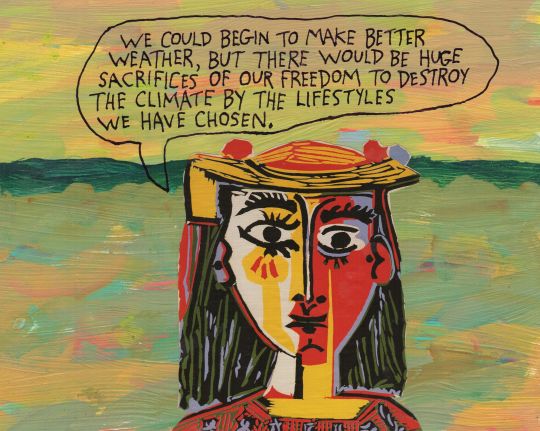
We could make better weather, but there would be huge sacrifices of our freedom to destroy the climate by the lifestyles we have chosen. -- Michael Lipsey
#fossil fuels#carbon#climate change#global warming#co2 emissions#coal#air travel#cruise ships#oil#methane#SUVs#pickup trucks
68 notes
·
View notes
Text
The levels of the three most important heat-trapping gases in the atmosphere reached new record highs again last year, US scientists have confirmed, underlining the escalating challenge posed by the climate crisis.
The global concentration of carbon dioxide, the most important and prevalent of the greenhouse gases emitted by human activity, rose to an average of 419 parts per million in the atmosphere in 2023 while methane, a powerful if shorter-lasting greenhouse gas, rose to an average of 1922 parts per billion. Levels of nitrous oxide, the third most significant human-caused warming emission, climbed slightly to 336 parts per billion.
The increases do not quite match the record jumps seen in recent years, according to the National Oceanic and Atmospheric Administration (Noaa), but still represent a major change in the composition of the atmosphere even from just a decade ago.
Through the burning of fossil fuels, animal agriculture and deforestation, the world’s CO2 levels are now more than 50% higher than they were before the era of mass industrialization. Methane, which comes from sources including oil and gas drilling and livestock, has surged even more dramatically in recent years, Noaa said, and now has atmospheric concentrations 160% larger than in pre-industrial times.
Noaa said the onward march of greenhouse gas levels was due to the continued use of fossil fuels, as well as the impact of wildfires, which spew carbon-laden smoke into the air. Nitrous oxide, meanwhile, has risen due to the widespread use of nitrogen fertilizer and the intensification of agriculture.
continue reading
12 notes
·
View notes
Text

[USA, New York]
100's of bankers are now outside the Citi HQ, locked out of their workplace.
Climate Activists are standing arm-in-arm with our partners, blockading every single door.
Citibank are the top financier of oil and gas in the Amazon and the second largest funders of all fossil fuels.
These bankers are climate criminals. They deserve not a moment of peace.
#usa#america#newyork#new york#new york city#activism#class war#co2 emissions#co2#methane#carbon dioxide#climate change#global warming#climate crisis#climate action#climate emergency#climate#climate and environment#eat the rich#eat the fucking rich#fuck the gop#fuck the police#fuck the supreme court#fuck the patriarchy#antifa#antiauthoritarian#anti capitalism#antinationalist#ausgov#politas
158 notes
·
View notes
Text



Alex Schlegel: Methane-Rainproof Outdoor Clothing (2019)
2K notes
·
View notes
Text
"Although methane is harmful in its effect on our climate, a new study of the greenhouse gas shows that its effects are not as intense as previously thought.
The biggest sources of methane gas emissions come from coal, oil, and gas development, although emissions from agriculture is probably the most heavily publicized.
As the planet absorbs heat from the sun, it would naturally radiate this long-wave energy back out into space. But greenhouse gasses trap the heat inside the atmosphere, causing ‘the greenhouse effect’.
Scientists at the University of California-Riverside have now found that methane also absorbs short-wave energy, which, through the creation of cooling clouds, actually cancels 30% of its own heat (the heat which the gas has created in the greenhouse effect).
Specifically, it creates more low-level clouds that offset the short-wave energy from the sun and fewer high-level clouds which increase the outward radiation of long-wave energy from the Earth.
“This has implications for understanding in more detail how methane and perhaps other greenhouses gases can impact the climate system,” said Robert Allen, UCR assistant professor of Earth sciences. “Shortwave absorption softens the overall warming and rain-increasing effects but does not eradicate them at all.”
They also found, as Allen says, that methane cancels 60% of increased levels of precipitation predicted under global warming models—yet more good news for cities and towns around flood zones.
For a number of reasons, this could be a revolutionary discovery. The EPA says that methane’s greenhouse effect is 34 times that of CO2.
Using the U.S. as an example, methane accounts for only around 10% of the nation’s emissions. The lifespan of a methane molecule in terms of its harmful affect on climate is around 9 years.
This means that methane emitted 9 years ago is no longer causing a greenhouse effect. By contrast, the greenhouse effect of CO2 molecules is more than 1,000 years.
For years, climate scientists have known that methane was a critical greenhouse gas for humanity to target, but now we can create more accurate models that reflect how methane is 30% less harmful than we thought and it counteracts 60% of its own harmful rain effects."
-via Good News Network, 3/28/23
The study was published in the renowned journal Nature, and there's a full open access copy here!
#global warming#climate change#emissions#methane#greenhouse gasses#greenhouse gas emissions#nature#agriculture#atmospheric science#carbon dioxide#good news#hope#science and technology
164 notes
·
View notes
Link
A microbial culture developed from the kangaroo feces inhibited methane production in a cow stomach simulator.
After researchers added the baby kangaroo culture and a known methane inhibitor to the simulated stomach, it produced acetic acid instead of methane. Unlike methane, which cattle discard as flatulence, acetic acid has benefits for cows as it aids muscle growth.
“Methane emissions from cows are a major contributor to greenhouse gases, and at the same time, people like to eat red meat,” says Birgitte Ahring, professor in with the bioproducts, sciences, and engineering laboratory at Washington State University and corresponding author of the study in the journal Biocatalysis and Agricultural Biotechnology. “We have to find a way to mitigate this problem.”
Reducing the burps and farts of methane emissions from cattle is no laughing matter. Methane is the second largest greenhouse gas contributor and is about 30 times more potent at heating up the atmosphere than carbon dioxide.
Continue Reading
220 notes
·
View notes
Text
#current events#thecooldown#pollution#climate crisis#kayrros#sky news#polluting leaks#methane#united states#russia#turkmenistan#australia#india#environmental protection agency#EPA#global methane pledge#world health organization#can we PLEASE do something now...?!
10 notes
·
View notes